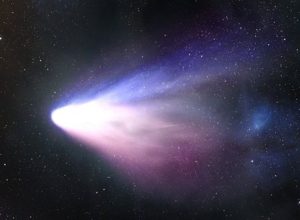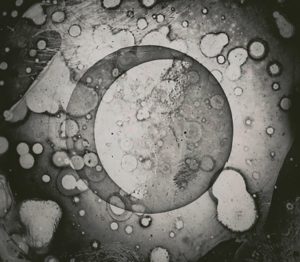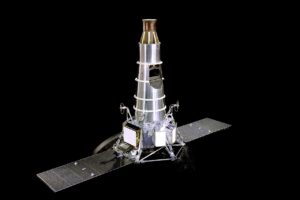March 22, 1997: Comet Halle-Bopp makes its closest approach to Earth

Comet Hale-Bopp | NASA
Comet Halle-Bopp, one of the brightest comets ever recorded, and made its closest approach to Earth on March 22, 1997. It was visible to the naked eye for approximately eighteen months, making it the most-viewed comet in history. It was first identified by Alan Hale and Thomas Bopp, two amateur astronomers. Though Hale and Bopp were located in different states and did not collaborate on their discovery, they spotted the comet at nearly the exact same time. Because of this coincidence, both men are credited for the discovery and share its namesake.
March 24, 1840: First photograph of the full Moon taken

Daguerreotype of the Moon from March 1840, attributed to Dr. John William Draper | Prof. Baryd Still, NYU Archives
The first detailed photograph of the full Moon was taken by English scientist, chemist, and historian John William Draper on the evening of March 24, 1840. The image was a daguerreotype, meaning it was made by a process of exposing a sheet of silver-plated copper inside a camera, then developing the image by fuming it with mercury vapor. Draper made his own improvements to the process of development of daguerreotypes, increasing the sensitivity of the plates used and shortening exposure times. It was these improvements that allowed him to take a far more detailed image of the Moon than had ever been taken before.
Though one can still make out the details of the image (pictured right), it has sustained significant damage over the years. Daguerreotypes are very fragile and decay over time, even with significant preservation efforts.

The Ranger 9 Spacecraft | NASA
March 24, 1965: Ranger 9 transmits high-resolution images of Moon before crash landing
Ranger 9 was a Lunar probe, launched by NASA on March 21, 1965. The probe was designed to crash-land on the Lunar surface, transmitting high-resolution images back to Earth via six television cameras.
Three days after it was launched, Ranger 9 successfully achieved its mission and crash-landed on the Moon after broadcasting images of its surface on live television, where it was seen by millions of viewers across the United States.
March 25, 1655: Christian Huygens discovers Titan, moon of Saturn

Christian Huygens | Caspar Netscher
Titan, the largest of Saturn’s eighty-two moons, was discovered by Dutch astronomer Christian Huygens on March 25, 1655. Inspired by Galileo Galilei’s discovery of Jupiter’s four largest moons, Huygens and his older brother began building telescopes in 1650, and observed Titan orbiting Saturn just five years later. Huygens initially named his discovery Saturni Luna (Latin for “Saturn’s moon”). The name Titan was later adopted after it was used in an 1847 publication by John Herschel, son of William Herschel, discoverer of Saturnian moons Mimas and Enceladus.